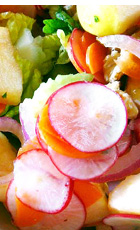Many people believe that the primary cause of osteoporosis is a lack of calcium in their diet. However, in the overall picture, calcium is only a small piece of the puzzle. Though calcium supplements may sometimes help, there are other dietary concerns that need to be examined.
 |
| Soft drinks. (Photo credit: Wikipedia) |
Therefore, with every soft drink, candy, cake and goodie you indulge in, you are robbing your skeleton of its bone density. The calcium and magnesium the body harvests in an attempt to counteract this acidic environment gets passed through your kidneys, (where it can also contribute to kidney stones) and exits your body through your urine. To prevent losing your bone mass to dietary causes, simply avoid consuming any white flour, processed sugars, added sugars, soft drinks, sweets, candies, breads, or any other ingredients that are made with refined carbohydrates (which your body typically treats as sugars).
 |
| Cabbage rolls (Photo credit: Wikipedia) |
By now you've probably noticed some common themes; eat lots of naturally healthy fruits and vegetables - particularly green and brightly colored ones, as well as other healthy whole foods, and avoid processed foods - particularly processed oils and sugars. By making just these few simple modifications in your daily diet, you can significantly reduce your odds of succumbing to some of today's deadliest diseases. Remember - your health is up to you! Make healthy choices for a healthier you. And be sure to keep an eye on our main blog for lots of helpful tips on living a healthy, holistic lifestyle.




